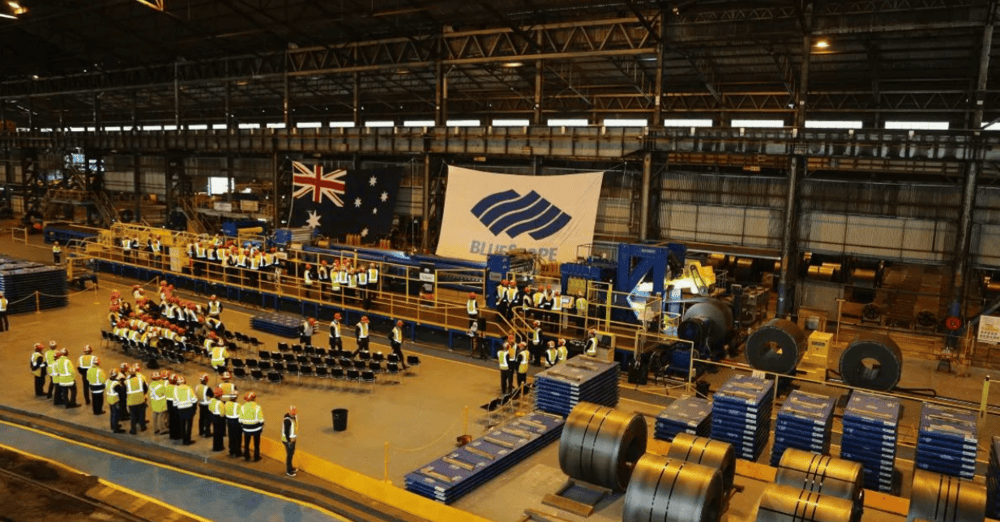BlueScope Steel Surges as U.S. Tariff Hike Fuels Steel Sector Rally
Shares of Australian steelmaker BlueScope Steel Ltd $BSL.AX jumped sharply on Monday, reaching a more than three-month high after former U.S. President Donald Trump announced plans to double tariffs on imported steel. The move reignited investor interest in companies with significant U.S. operations, particularly those expected to benefit from potential trade barriers targeting foreign steel producers.
The broader ASX 200 index $^AXJO declined by 0.4% during the session, but BlueScope defied the trend, emerging as a top gainer amid renewed optimism in the steel manufacturing space.
Trade Policy Shift Lifts Domestic Steel Producers
Trump’s proposed tariff escalation aims to increase levies on steel imports from 25% to 50%, as part of a broader protectionist agenda focused on revitalizing domestic manufacturing and reducing reliance on foreign supply chains. BlueScope, which operates five facilities in North America—including the high-margin North Star mill in Ohio—stands to benefit directly from any increase in demand for locally produced steel.
The market responded swiftly. BlueScope’s stock price climbed 9.4% to AUD 24.88 in early trading, its highest level since February. The company’s U.S.-based footprint positions it as a key beneficiary in scenarios where international competitors may face higher entry costs due to tariff hikes.

Quick Facts
BlueScope Steel shares rose 9.4% to AUD 24.88
Stock reached a three-month high on tariff news
Trump pledged to double tariffs on imported steel
BlueScope runs five U.S. facilities, including North Star (Ohio)
ASX 200 index fell 0.4% despite BlueScope’s rally
Market Reactions and Strategic Implications
Market participants interpreted the tariff announcement as a potential turning point for the U.S. steel sector. While protectionist policies typically raise input costs in the short term, they also tend to support domestic producers by reducing competition from lower-cost exporters.
The USD/AUD exchange rate showed little movement, suggesting the currency markets are awaiting further details on policy execution. Analysts, however, flagged potential volatility ahead, especially if other countries retaliate or challenge the tariff increases at the World Trade Organization (WTO).
From a strategic standpoint, BlueScope’s diversified geographic presence, including operations in Australia, New Zealand, the U.S., and parts of Asia, may offer a cushion against any unintended consequences stemming from escalating trade disputes.

Key Takeaways
Tariff policy shifts can rapidly reprice sector-specific equities.
BlueScope’s U.S. exposure gives it a tactical advantage in domestic markets.
Investors favored steel producers as likely short-term beneficiaries.
Broader market remained cautious, with ASX 200 under mild pressure.
Long-term risks include potential for trade retaliation and global supply chain distortion.
Steel Tariffs Reignite Strategic Focus on Domestic Production
BlueScope Steel’s performance on Monday reflects the broader sensitivity of industrial equities to trade policy signals. With the U.S. presidential race intensifying, tariff-driven policy proposals could become a recurring theme influencing sectoral performance in both domestic and international markets.
The stock’s sharp rise underscores investor confidence in BlueScope’s capacity to navigate geopolitical uncertainty, particularly given its strong operational base in the U.S. However, the long-term sustainability of such gains will depend on global reactions, policy follow-through, and steel demand fundamentals.















Comments